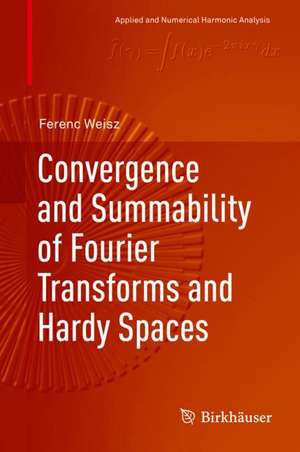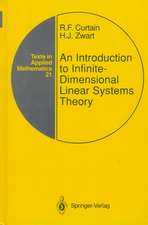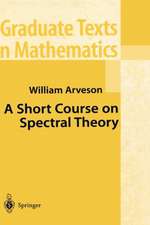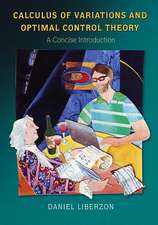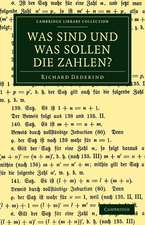Convergence and Summability of Fourier Transforms and Hardy Spaces: Applied and Numerical Harmonic Analysis
Autor Ferenc Weiszen Limba Engleză Hardback – 18 ian 2018
This book investigates the convergence and summability of both one-dimensional and multi-dimensional Fourier transforms, as well as the theory of Hardy spaces. To do so, it studies a general summability method known as theta-summation, which encompasses all the well-known summability methods, such as the Fejér, Riesz, Weierstrass, Abel, Picard, Bessel and Rogosinski summations.
Following on the classic books by Bary (1964) and Zygmund (1968), this is the first book that considers strong summability introduced by current methodology. A further unique aspect is that the Lebesgue points are also studied in the theory of multi-dimensional summability. In addition to classical results, results from the past 20-30 years – normally only found in scattered research papers – are also gathered and discussed, offering readers a convenient “one-stop” source to support their work. As such, the book will be useful for researchers, graduate and postgraduate students alike.
| Toate formatele și edițiile | Preț | Express |
|---|---|---|
| Paperback (1) | 734.44 lei 6-8 săpt. | |
| Springer International Publishing – 6 iun 2019 | 734.44 lei 6-8 săpt. | |
| Hardback (1) | 740.57 lei 6-8 săpt. | |
| Springer International Publishing – 18 ian 2018 | 740.57 lei 6-8 săpt. |
Din seria Applied and Numerical Harmonic Analysis
-
 Preț: 399.29 lei
Preț: 399.29 lei - 20%
 Preț: 673.02 lei
Preț: 673.02 lei - 17%
 Preț: 431.76 lei
Preț: 431.76 lei - 19%
 Preț: 443.08 lei
Preț: 443.08 lei -
 Preț: 412.57 lei
Preț: 412.57 lei - 15%
 Preț: 550.04 lei
Preț: 550.04 lei - 15%
 Preț: 653.98 lei
Preț: 653.98 lei - 18%
 Preț: 1014.28 lei
Preț: 1014.28 lei - 15%
 Preț: 647.92 lei
Preț: 647.92 lei -
 Preț: 413.37 lei
Preț: 413.37 lei - 15%
 Preț: 648.74 lei
Preț: 648.74 lei - 15%
 Preț: 654.77 lei
Preț: 654.77 lei - 15%
 Preț: 636.80 lei
Preț: 636.80 lei - 15%
 Preț: 532.89 lei
Preț: 532.89 lei - 15%
 Preț: 646.62 lei
Preț: 646.62 lei - 15%
 Preț: 653.98 lei
Preț: 653.98 lei -
 Preț: 397.38 lei
Preț: 397.38 lei - 15%
 Preț: 656.43 lei
Preț: 656.43 lei - 15%
 Preț: 661.97 lei
Preț: 661.97 lei - 18%
 Preț: 957.13 lei
Preț: 957.13 lei - 24%
 Preț: 829.74 lei
Preț: 829.74 lei -
 Preț: 398.35 lei
Preț: 398.35 lei - 20%
 Preț: 569.86 lei
Preț: 569.86 lei -
 Preț: 392.21 lei
Preț: 392.21 lei - 18%
 Preț: 1121.76 lei
Preț: 1121.76 lei - 18%
 Preț: 1001.32 lei
Preț: 1001.32 lei -
 Preț: 387.75 lei
Preț: 387.75 lei - 15%
 Preț: 653.98 lei
Preț: 653.98 lei - 20%
 Preț: 567.32 lei
Preț: 567.32 lei - 20%
 Preț: 573.77 lei
Preț: 573.77 lei -
 Preț: 406.80 lei
Preț: 406.80 lei -
 Preț: 387.38 lei
Preț: 387.38 lei - 5%
 Preț: 1168.71 lei
Preț: 1168.71 lei -
 Preț: 400.85 lei
Preț: 400.85 lei -
 Preț: 398.15 lei
Preț: 398.15 lei - 15%
 Preț: 644.49 lei
Preț: 644.49 lei - 19%
 Preț: 575.84 lei
Preț: 575.84 lei - 15%
 Preț: 703.71 lei
Preț: 703.71 lei - 20%
 Preț: 334.71 lei
Preț: 334.71 lei - 15%
 Preț: 525.54 lei
Preț: 525.54 lei -
 Preț: 405.06 lei
Preț: 405.06 lei - 15%
 Preț: 536.96 lei
Preț: 536.96 lei
Preț: 740.57 lei
Preț vechi: 903.13 lei
-18% Nou
Puncte Express: 1111
Preț estimativ în valută:
141.72€ • 153.89$ • 119.05£
141.72€ • 153.89$ • 119.05£
Carte tipărită la comandă
Livrare economică 22 aprilie-06 mai
Preluare comenzi: 021 569.72.76
Specificații
ISBN-13: 9783319568133
ISBN-10: 3319568132
Pagini: 434
Ilustrații: XXII, 435 p. 34 illus.
Dimensiuni: 155 x 235 mm
Greutate: 0.82 kg
Ediția:1st ed. 2017
Editura: Springer International Publishing
Colecția Birkhäuser
Seria Applied and Numerical Harmonic Analysis
Locul publicării:Cham, Switzerland
ISBN-10: 3319568132
Pagini: 434
Ilustrații: XXII, 435 p. 34 illus.
Dimensiuni: 155 x 235 mm
Greutate: 0.82 kg
Ediția:1st ed. 2017
Editura: Springer International Publishing
Colecția Birkhäuser
Seria Applied and Numerical Harmonic Analysis
Locul publicării:Cham, Switzerland
Cuprins
List of Figures.- Preface.- I One-dimensional Hardy spaces and Fourier transforms.- 1 One-dimensional Hardy spaces.- 1.1 The Lp spaces.- 1.2 Hardy-Littlewood maximal function.- 1.3 Schwartz functions.- 1.4 Tempered distributions and Hardy spaces.- 1.5 Inequalities with respect to Hardy spaces.- 1.6 Atomic decomposition.- 1.7 Interpolation between Hardy spaces.- 1.8 Bounded operators on Hardy spaces.- 2 One-dimensional Fourier transforms.- 2.1 Fourier transforms.- 2.2 Tempered distributions.- 2.3 Partial sums of Fourier series.- 2.4 Convergence of the inverse Fourier transform.- 2.5 Summability of one-dimensional Fourier transforms.- 2.6 Norm convergence of the summability means.- 2.7 Almost everywhere convergence of the summability means.- 2.8 Boundedness of the maximal operator.- 2.9 Convergence at Lebesgue points.- 2.10 Strong summability.- 2.11 Some summability methods.- II Multi-dimensional Hardy spaces and Fourier transforms.- 3 Multi-dimensional Hardy spaces.- 3.1 Multi-dimensional maximal functions.- 3.1.1 Hardy-Littlewood maximal functions.- 3.1.2 Strong maximal functions.- 3.2 Multi-dimensional tempered distributions and Hardy spaces.- 3.3 Inequalities with respect to multi-dimensional Hardy spaces.- 3.4 Atomic decompositions.- 3.4.1 Atomic decomposition of H2p (Rd).- 3.4.2 Atomic decomposition of Hp(Rd).- 3.5 Interpolation between multi-dimensional Hardy spaces.- 3.5.1 Interpolation between the H2p (Rd) spaces.- 3.5.2 Interpolation between the Hp(Rd) spaces.- 3.6 Bounded operators on multi-dimensional Hardy spaces.- 3.6.1 Bounded operators on H2p (Rd).- 3.6.2 Bounded operators on Hp(Rd).- 4 Multi-dimensional Fourier transforms.- 4.1 Fourier transforms.- 4.2 Multi-dimensional partial sums.- 4.3 Convergence of the inverse Fourier transform.- 4.4 Multi-dimensional Dirichlet kernels.- 4.4.1 Triangular Dirichlet kernels.- 4.4.2 Circular Dirichlet kernels.- 5 `q-summability of multi-dimensional Fourier transforms.- 5.1 The `-summability means.- 5.2 Norm convergence of the `q-summability means.- 5.2.1 Proof ofTheorem 5.2.1 for q = 1 and q = 1.- 5.2.1.1 Proof for q = 1 in the two-dimensional case.- 5.2.1.2 Proof for q = 1 in higher dimensions (d 3).- 5.2.1.3 Proof for q = 1 in the two-dimensional case.- 5.2.1.4 Proof for q = 1 in higher dimensions (d 3).- 5.2.2 Some summability methods.- 5.2.3 Further results for the Bochner-Riesz means.- 5.3 Almost everywhere convergence of the `q-summability means.- 5.3.1 Proof of Theorem 5.3.2.- 5.3.1.1 Proof for q = 1 in the two-dimensional case.- 5.3.1.2 Proof for q = 1 in higher dimensions (d 3).- 5.3.1.3 Proof for q = 1 in the two-dimensional case.- 5.3.1.4 Proof for q = 1 in higher dimensions (d 3).- 5.3.2 Proof of Theorem 5.3.3.- 5.3.3 Some summability methods.- 5.3.4 Further results for the Bochner-Riesz means.- 5.4 Convergence at Lebesgue points.- 5.4.1 Circular summability (q = 2).- 5.4.2 Cubic and triangular summability (q = 1 and q = 1).- 5.4.2.1 Proof of the results for q = 1 and d = 2.- 5.4.2.2 Proof of the results for q = 1 and d = 2.- 5.4.2.3 Proof of the results for q = 1 and d 3.- 5.4.2.4 Proof of the results for q = 1 and d 3.- 5.5 Proofs of the one-dimensional strong summability results.- 6 Rectangular summability of multi-dimensional Fourier transforms.- 6.1 Norm convergence of rectangular summability means.- 6.2 Almost everywhere restricted summability.- 6.3 Restricted convergence at Lebesgue points.- 6.4 Almost everywhere unrestricted summability.- 6.5 Unrestricted convergence at Lebesgue points.- Bibliography.- Index.- Notations.
Notă biografică
Ferenc Weisz is Professor at the Department of Numerical Analysis of the Eötvös Loránd University in Budapest, Hungary.
Textul de pe ultima copertă
This book investigates the convergence and summability of both one-dimensional and multi-dimensional Fourier transforms, as well as the theory of Hardy spaces. To do so, it studies a general summability method known as theta-summation, which encompasses all the well-known summability methods, such as the Fejér, Riesz, Weierstrass, Abel, Picard, Bessel and Rogosinski summations.
Following on the classic books by Bary (1964) and Zygmund (1968), this is the first book that considers strong summability introduced by current methodology. A further unique aspect is that the Lebesgue points are also studied in the theory of multi-dimensional summability. In addition to classical results, results from the past 20-30 years – normally only found in scattered research papers – are also gathered and discussed, offering readers a convenient “one-stop” source to support their work. As such, the book will be useful for researchers, graduate and postgraduate students alike.
Caracteristici
Explores comprehensively the summability of Fourier transforms as well as the theory of Hardy spaces Gathers classical results as well as recent results from the past 20-30 years Considers strong summability introduced by current methodology
